-
×
 Modular EBS Knee Joint
1 × $6,000.00
Modular EBS Knee Joint
1 × $6,000.00 -
×
 Running foot 1E90 and sports knee module 3s80 Used
1 × $1,200.00
Running foot 1E90 and sports knee module 3s80 Used
1 × $1,200.00
Order above knee artificial leg at an affordable price
Above knee amputation (Transfemoral amputation) has the second highest amputation incidence after below knee amputation and can be a result of disease (such as diabetes and other related vascular/circulatory conditions), trauma, infection, tumors (cancer), or congenital abnormalities.
Above-knee amputees can regain reasonably good mobility, depending on the height of the amputation, therefore the remaining length of the residual limb (stump). The longer the residual limb length, the stronger the lever arm and prosthetic control.
 Long above knee residual limb.
Long above knee residual limb. Very short above knee residual limb.
Very short above knee residual limb.

- Irrespective of the cause of amputation, after amputation is performed, the prosthetic fitting, rehabilitation process, and prosthetic componentry remain essentially the same.
Suspension (attachment) of the prosthesis
In modern prosthetics, most above-knee prostheses are suspended (attached) using a silicone liner that is rolled onto the above-knee residual limb before it enters the prosthetic socket. The attachment between the silicone liner and the prosthetic socket can be mechanical (a pin and lock system) or by means of suction (air expelled through a one-way valve). There are many advantages to suction liner systems, and they have by far the highest incidence of use.
-

Locking liner with pin (attached to bottom of liner and lock incorporated in bottom of socket creating a mechanical lock suspension
-

Seal-In liner with one-way expulsion valve in the bottom of the socket – expelling air from the socket, creating suction suspension
-
Placing the silicone liner on the above-knee residual limb

Measuring for the correct silicone liner size and donning of the Seal-In suction suspension liner. The liner is simply rolled onto the residual limb.
-
Taking a plaster cast of the above knee residual limb

Plaster-of-Paris is wrapped around the residual limb and allowed to set. Some alignment reference lines are marked. The inside view of the plaster negative mold on the right.
-
Shaping the positive plaster cast model
Shaping of the plaster residual limb model is one of the most important steps in the successful and comfortable fitting of the above-knee prosthesis. The socket is the ‘’foundation’’ of the prosthesis. This is where the prosthetist’s skill and experience are of vital importance.

The plaster model is carefully shaped with special prosthetic tools to optimally fit the residual limb. It has to apply pressure on certain areas and alleviate pressure on other areas. It is also important that it be shaped to control and prevent rotation of the prosthesis on the residual limb.
-
Fitting of a clear diagnostic prosthetic socket
A clear, plastic diagnostic or ‘’test’’ socket is fitted to determine the correct fit of the prosthetic socket and identify any areas that need adjustment. The diagnostic socket can be fitted to the remaining prosthesis components so that the socket fit can also be assessed during walking. The optimal alignment of the prosthesis can then also be determined.
-
Knee Disarticulation
A knee disarticulation (sometimes called a ‘through knee’) is an amputation that involves keeping the femur intact. However, the tendons and ligaments attaching the femur (thigh bone) to the tibia (shin bone) are detached.
There are several advantages of the knee disarticulation over the traditional transfemoral (above-knee) amputation. The first is, decreased rehabilitation time since there is less trauma to the femur. Secondly, the adductor group of muscles (the muscles that bring the leg towards the body) are still intact. This results in the patient having more control over his/her residual limb. The third advantage is, the end of the femur can take some weight bearing instead of through the ischium (sitting bone).
The length of the residual limb is as long as possible (the entire femur) which equals more control over the prosthesis. This can translate into more stability and a better gait.
Despite the advantages, the knee disarticulation level presents an interesting challenge to the patient and the prosthetist. The end of the femur is larger than the area above it, which means it can be difficult to accommodate this area. Since the femur is fully intact, it can lower the person’s knee center compared to the opposite side and limit componentry options.
Due to these kinds of challenges, few prosthetists, when consulted prior to amputation by a surgeon or patient, will recommend this level over the traditional transfemoral level.
While there are challenges with this level, our prosthetists have many years of experience fitting this unique level of amputation. Contact us to find out more.

Here, the diagnostic socket can be seen front, side, and back. The suction seal can be seen inside the socket, with the air expulsion valve incorporated in the socket
The through-knee amputation is the third most common level of amputation of the lower extremities (after below-knee and above-knee amputations). It is performed when a below-knee amputation is not viable, generally where the tissues are damaged or diseased too close to the knee joint, which would result in a very short below-knee amputation, posing prosthetic fitting problems.
 Through Knee Prosthesis without cosmetic cover.
Through Knee Prosthesis without cosmetic cover. Through Knee Prosthesis with high definition cosmetic cover.
Through Knee Prosthesis with high definition cosmetic cover.
If a below-knee amputation is not viable, then a through-knee amputation is performed rather than an above-knee amputation, wherever possible. Through-knee amputation has a number of advantages over an above-knee amputation:
- As the femoral condyles remain, they can support partial weight bearing in the prosthetic socket.
- The prosthetic socket, therefore, does not have to go as high up to the buttock and ischial bone (sitting bone) as with the above-knee socket, generally making the prosthetic socket fit and sitting, especially, more comfortable.
- It leaves a very long residual limb, therefore a long lever arm for good prosthetic limb control.
-

SKELETAL ANATOMY OF AN:
1. Above knee amputation
Amputation done through the shaft of the femur bone.2. Through knee amputation
Amputation done through the knee joint – leaving the round femoral condyles. -

Above knee residual limb (left) vs. through knee residual limb (right)
The main disadvantage of through-knee amputation is that the knee centers (or axes) of the prosthetic knee and the sound limb knee are not equal. This is because the socket materials, attachment components, and structural build height of the prosthetic components take up space, effectively placing the prosthetic knee joint axis lower than that of the sound limb knee.
This causes the through-knee prosthesis knee joint to extend further forward from the sound side limb when the amputee is sitting. It is therefore a predominantly cosmetic consideration. The functional advantages of the through-knee amputation and prosthesis far outweigh the cosmetic compromise when sitting. The prosthetic knee can be seen extending further forward than the sound limb knee when sitting down.
The prosthetic knee can be seen extending further forward than the sound limb knee when sitting down.
The rehabilitation process, prosthesis manufacturing (casting, socket manufacture and fitting, as well as alignment) is the same as discussed under above knee (transfemoral) amputations. Only the prosthetic socket principles and design are different.
-
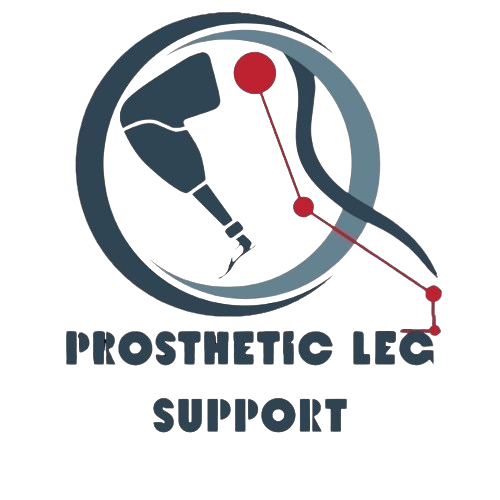
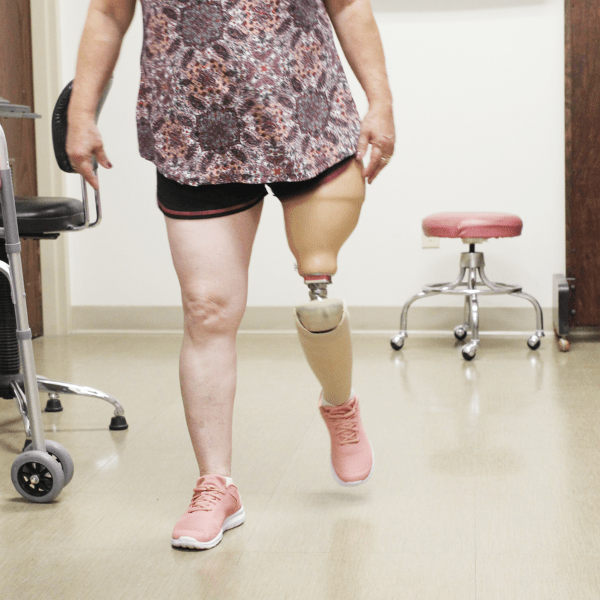

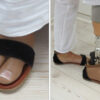






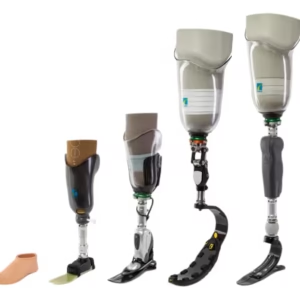
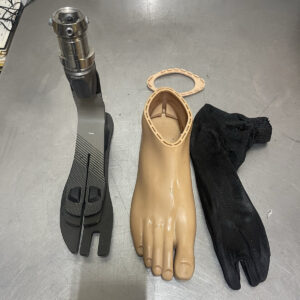
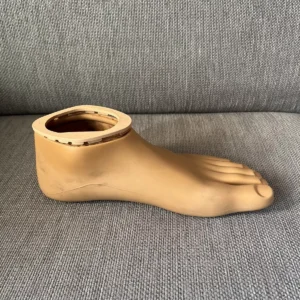
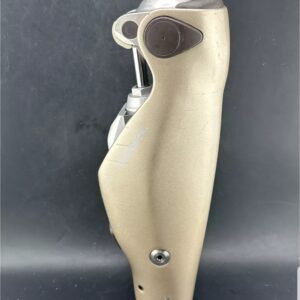
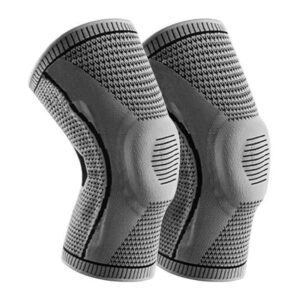


Reviews
There are no reviews yet.